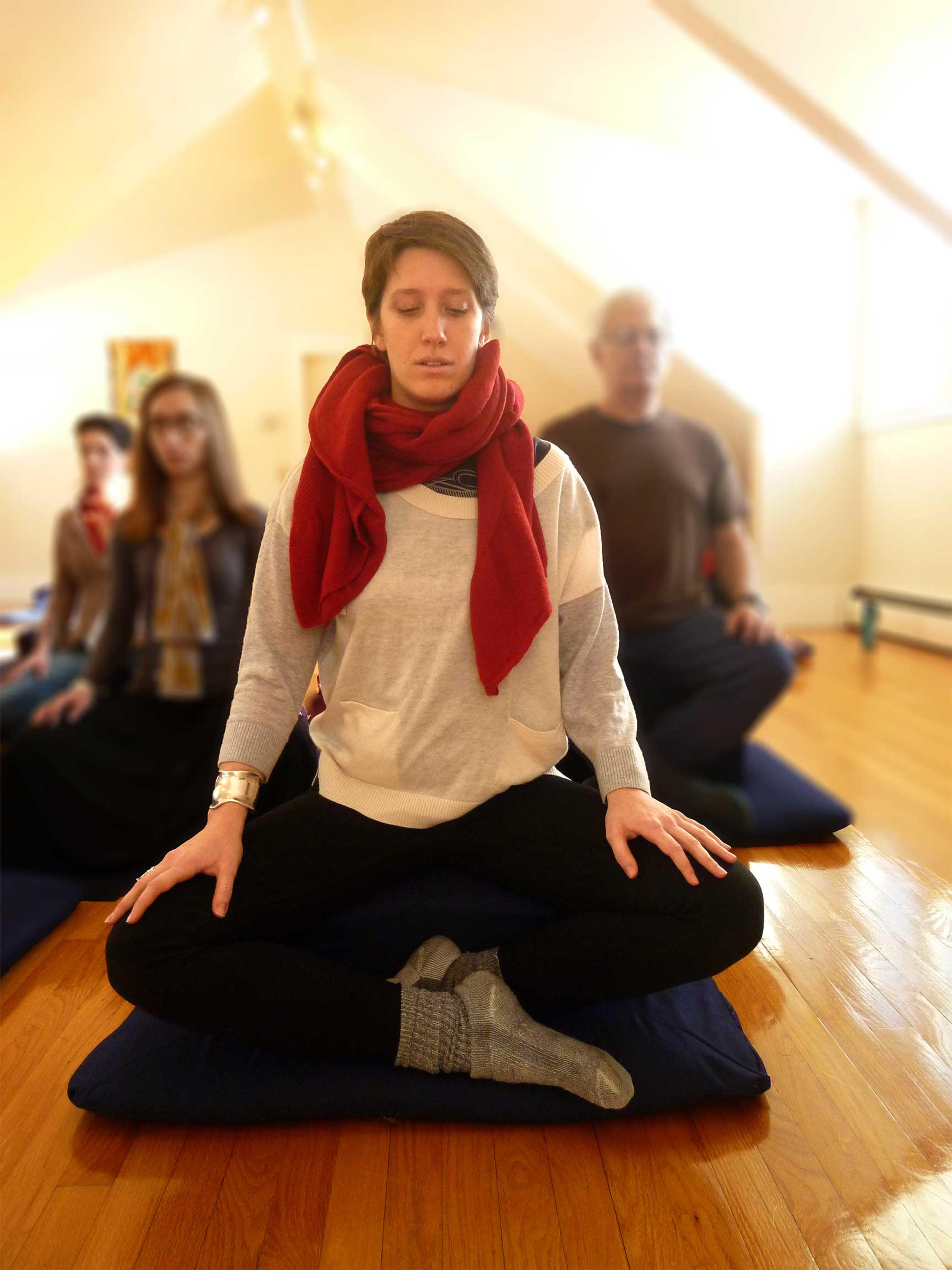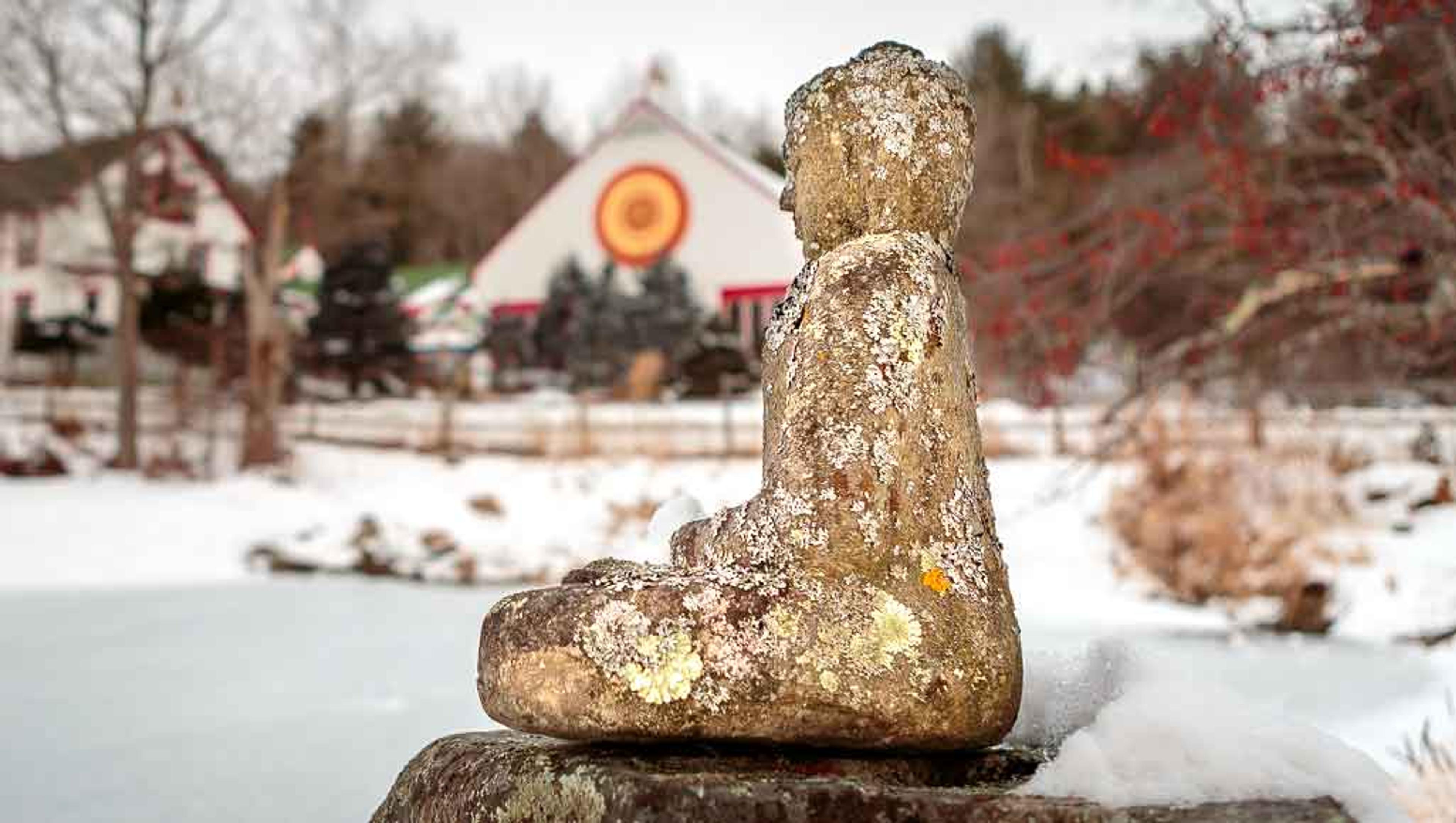
Meditation Practice
Meditation at Karmê Chöling
Meditation is at the heart of what we do at Karmê Chöling. We come together as a community twice a day to practice Buddhist sitting meditation. In this way we can support each other in the discovery of our own inherent ‘wakefulness’, empowering us to bring mindfulness and awareness into every aspect of our lives.
Buddhist Meditation
Meditation is ancient. The Buddha learned to meditate from his own teachers, making it a pre-Buddhist practice.
Buddhism itself has been around for more than 2500 years. Over that time it has spread throughout many parts of the world. Like Christianity, there are many schools and sub-schools of Buddhism with different versions of meditation. Karmê Chöling itself uses many forms of meditation. These draw upon Indian, Japanese and especially Tibetan practices.
Shamatha
The foundational form of meditation that we work with is called Shamatha, ‘calm abiding’, or ‘developing peace’. It is a mindfulness technique that develops our capacity to stay focused and helps us develop clarity about what is actually going on. Mindfulness not only applies to meditation but to our daily life as well.
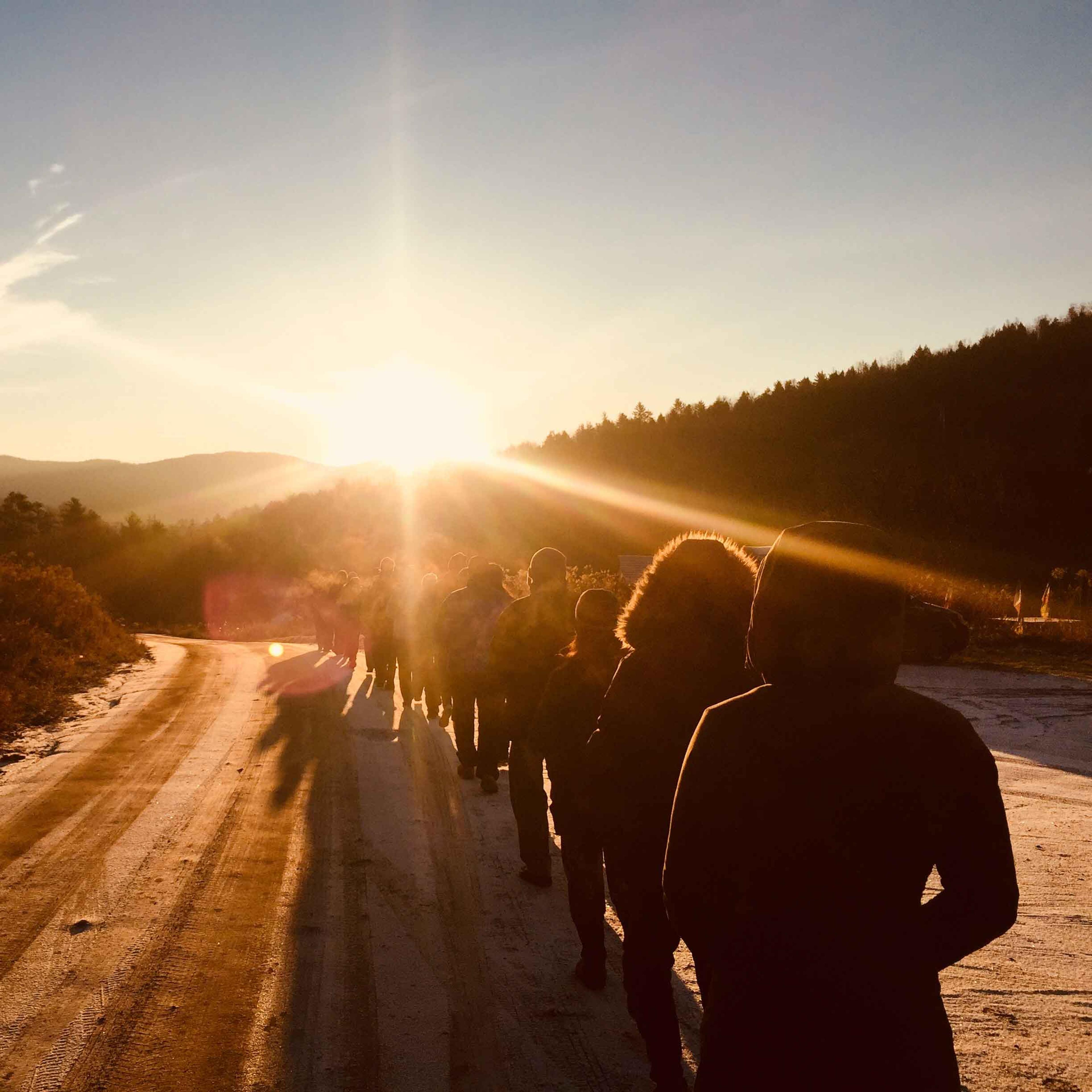
It doesn’t matter how fast or slow you go. Pause. Breathe. Set your feet in the right direction. Then begin.
What is Meditation?
Sitting meditation isn’t complex or mysterious. In fact, the technique is very simple. Its very simplicity can make it perhaps one of the most challenging practices to try and develop. Simply put, it is quietly being with ourselves and gently acknowledging what we see. Over time we develop an understanding of who we are which begins to affect how we lead our lives.
Meditation is becoming familiar with ourselves. It is becoming familiar with our mental landscape of thoughts and emotions and how they color our view of ourselves, others, the environment and the rest of the world. Usually we are not aware of just how active our mind really is. We only see the highlights of mental events; those that break through to our awareness. There is more that we are unaware of unless we take the time to quietly be with ourselves and look.
What’s the purpose of meditation?
Buddhism sees the conceptual mind with all of its presuppositions and ‘givens’ as the source behind all our speech and actions. If we are unfamiliar with the full array of our thoughts and emotions, then we don’t fully understand why we react the way we do to events. We don’t understand why we are depressed, angry, get into fights or have difficulty in our relationships. We are steering our ship blind.
But through patience and gentleness, we become familiar with who we are. We see where we are fearful, angry, desirous and so on. With this self knowledge we can begin to create mindful choices where there were once mindless habits.
By becoming familiar with who we are through meditation, we can change the course of our life.
Getting Started
With sitting meditation practice
Preparing for meditation practice
Before we enter the shrine room we prepare for our practice by readying the body and mind. We do this whether we are on retreat with others or are by ourselves in our own special practice place.
Wearing loose clothing
Meditation is a different kind of sitting than what we normally do, for a longer length of time. This can manifest as bodily discomfort, especially early on in a practitioner’s relationship with meditation (or the first days of a retreat). We can accommodate this by donning loose, comfortable clothing.
Where to meditate
Pick a quiet place in your house that you can dedicate to your meditation practice. Ideally this is an 'uplifted' space; a place that is simple, uncluttered and clean. A place that is inviting to practice in.
When to meditate
Timing is important. If you can consistently practice at a particular time on dedicated days, that tends to help you get to the cushion and do your meditation practice. Morning or evening is fine.
Why meditate
Before meditating it is useful to remind ourselves that this is time we are setting aside for meditation practice. We have all the other hours in the day to deal with our normal tasks and chores. This is our time to quietly be with ourselves, without distraction.
Meditation Instructions
Posture, Breath, Thoughts
Posture: Taking your seat
When we meditate, a great deal of emphasis is put on the posture that we take. This involves finding an upright position where you can feel alert yet relaxed. If you are too uncomfortable it will be difficult for you to find your breath and focus. On the other hand, if you are too relaxed, you tend to fall asleep, which is why the posture involves sitting upright. The main point of the posture is to be able to be physically still for a period of time so that you can settle in and pay attention to your meditation.
Like meditation itself, your posture and experience of your body is ultimately a relationship you develop and understand through time and practice. Be patient with yourself! Don’t beat yourself up for weak shoulders or tight hips. The mind and body tend to reflect one another. Opening and relaxing is a journey that takes a lifetime (or more!)
Seven points of posture
- Have a stable, comfortable seat or cushion to sit upon.
- Sit cross-legged with your hips higher than your knees. If you are sitting on a chair you will have your legs straight and your feet flat on the ground. If you are using a seiza bench you will have your legs underneath you.
- Place your hands lightly on your thighs.
- Have a ‘strong’ back which is straight but relaxed and an ‘open heart’ by widening the shoulders.
- Gently tuck the chin.
- Open your mouth slightly with the tongue resting on the roof of the mouth.
- Keep your eyes open with a soft, unfocused gaze, 3-6 feet in front of you.
Meditation cushions, benches and chairs
Karmê Chöling offers an assortment of meditation support. A good initial practice goal is to find a combination of cushion/chair supports and a posture that you can maintain for 10 minutes at a time. Remember, the key to longevity in your practice is to simply start where you are. From there, experiment over the course of your practice sessions to find what works for you. Pay attention to your mind & body, and most important of all, remember to be gentle with yourself.
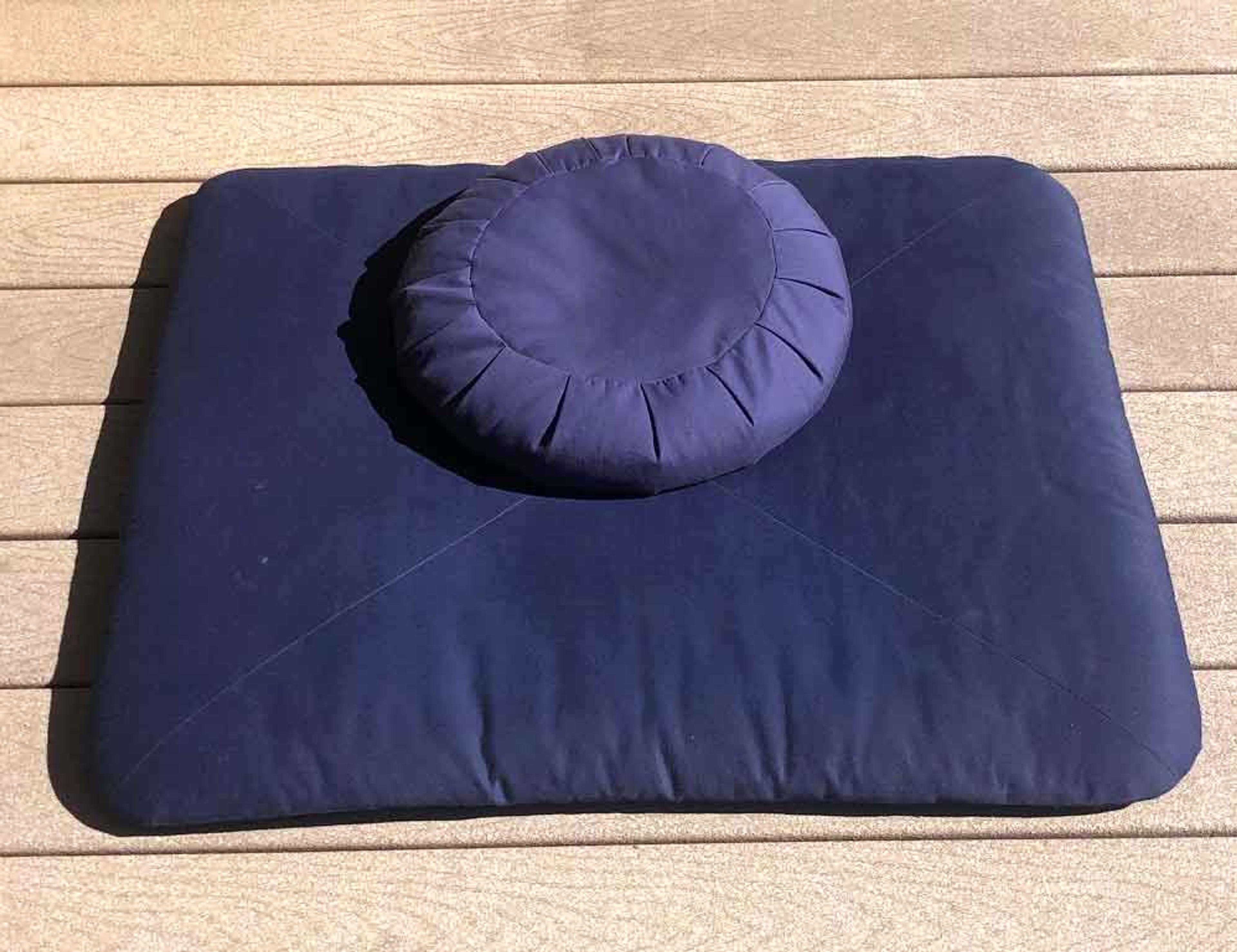


Breathing: Working with your breath
Your breath is the object of your meditation, or what you are being mindful of. Focusing on your breathing is a time honored way of settling the mind. As long as you are alive it is an ‘object’ available to you.
We follow our normal breathing during meditation. As we exhale, we focus on the air as it travels through the body and goes out into space. At the end of the exhalation there’s a gap, a sense of spaciousness. This sense of space lasts while we are inhaling and then again we focus on the breath as we exhale.
This is very much a felt bodily experience. We have a tendency to think everything through, so the breath might become another thought. “Now, I’m breathing” . Here, we are identifying with the breath or even ‘being’ the breath.
The difference between feeling the breath and thinking about the breath can seem subtle at first. It can be difficult to really settle into the sensation of your body as it breathes. You could choose somewhere along the breath’s passageway to focus on. You might notice the air on your upper lip or the air as it passes through the outer rim of your nostrils, and really be aware of it.
Focusing on the breath is grounding. It brings you back into the current moment again and again. In the beginning, trying to pay attention to the breath might feel hazy. By relaxing into the sensation of breathing it becomes easier with time to sharpen your focus on it. The more clearly you feel the breath, the more fully you are in the current moment.
After you exhale, again there's a gap. You've gone out into space with the breath on the exhale and so there's a sense of spaciousness. You're not focused on the breath as you draw in more air. In some ways you've done the work on the exhale and now you're resting in that spaciousness while you inhale more air.
Thoughts: How to handle thinking
A metaphor for how to engage with our thoughts during meditation is to think of it as taming a horse (or any wild animal, really). Except that in meditation, that wild animal is your conceptual mind with its racing thoughts.
We find a balance between being ‘not too tight and not too loose’.
Too tight means that we berate ourselves for being anything other than what we are. We are too strict on ourselves, and because of that, we develop a bad taste in our mouth for meditation. Like teaching a child to eat vegetables, you want it to be something they love! As soon as it’s a chore, it’s over.
On the other hand, if we are too loose with our mind, if we don’t create any parameters, no fence, no rope, then our horse is going to run off. It’s still wild.
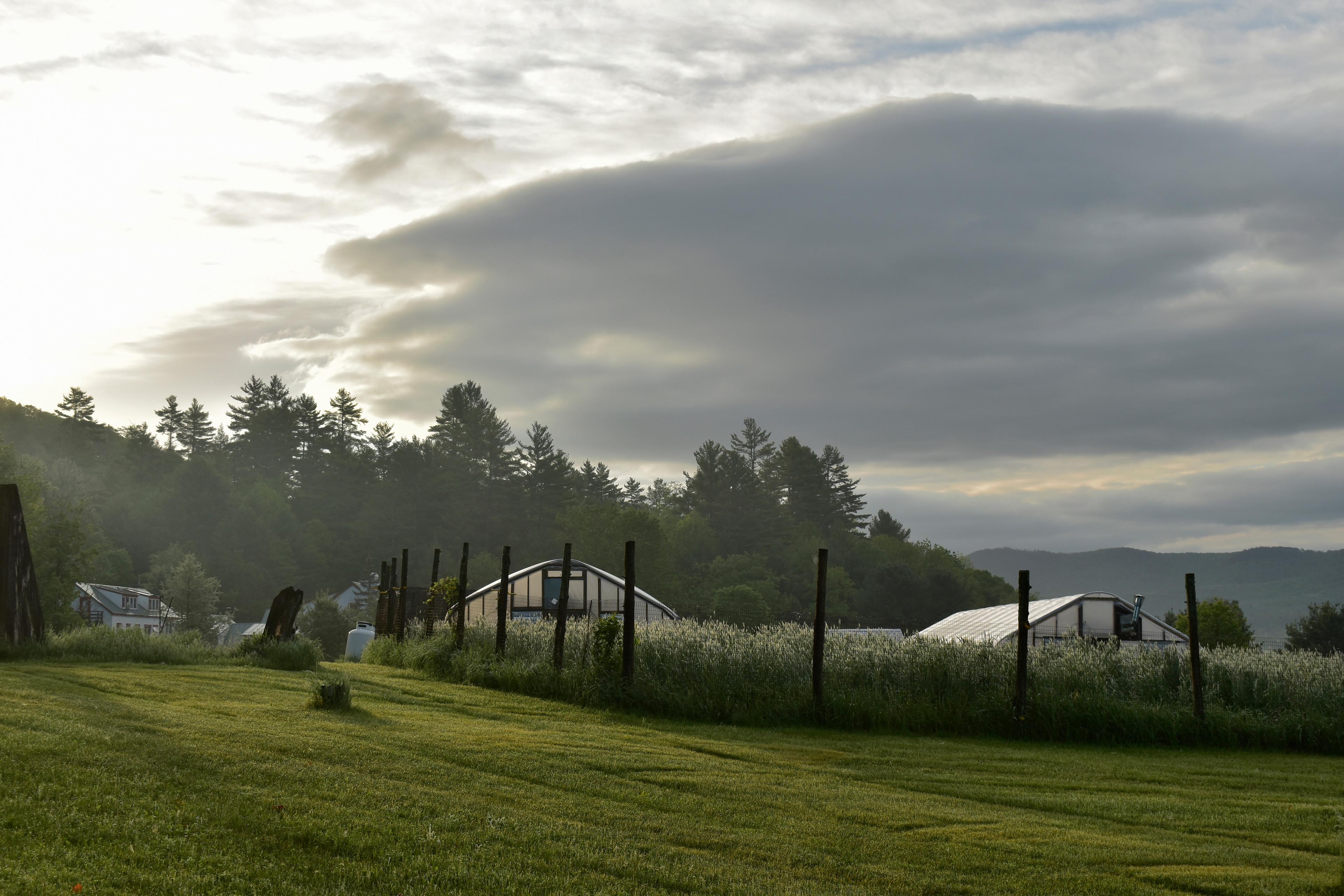
There is only one route to peace. You must train your mind.
Instead, we rope our horse, but we make that rope very long. We let our horse run far and wide, and get used to the rope. And then, slowly, as we develop a relationship with the horse, as it becomes used to us handling it, we bring the rope in, little by little.
We do this by balancing the focus we give to the outbreath, with the spaciousness we feel on the inbreath.
What do you do when you are following your breath and all of sudden you find yourself thinking about your vacation at a favorite destination or mulling over a nagging problem? The instructions are very simple:
This technique is called "Touch and go". It means not rejecting what you were caught up in thought about, and not indulging it by thinking about it more. It is very simply acknowledging that you were thinking and then coming back to the breath.
By labeling our thoughts (or anything else that distracts us from following our breath) we’re seeing the contrast between our felt experience and our conceptual life of thinking and ideation. By going back again (and again) to our breathing, we are becoming more familiar with the nonconceptual side of ourselves of being in the moment.
It’s okay to have thoughts during meditation. As humans, it’s a given that we will. The trick is to go back to following our breath when we become aware that we are ‘thinking’. As we deepen our relationship with our practice, by simply acknowledging our thoughts and then lightly returning to the breath, the thoughts and our mind will eventually begin to clear and settle down.
To bring this back to our horse metaphor, if you try to tame a wild horse by tying it too tight, too early, it will resist by bucking and trying to escape. If you ignore it, you will never develop a relationship with it. But through patience and kindness the horse will begin to trust and slowly become friendlier so you can work with it.
Meditation Instructors
It is best to receive meditation instruction from an experienced meditator in person. A live person sitting across from you can answer your questions based on your own specific situation. While on retreat or in an introductory program at Karmê Chöling, you will receive meditation instruction from a Meditation Instructor.
Introductory Classes & Programs
Walking Meditation
At Karmê Chöling, we intersperse sitting meditation with walking meditation. This provides relief from being in one position for a very long time with no breaks. It also allows for longer meditation sessions. More importantly, walking is considered a meditation practice in its own right. It’s an intermediary step between doing formal sitting meditation and getting up from the cushion to go about your life.
There are several elements to walking meditation:
Hand Mudra
- Make a loose fist with your left hand, wrapping the fingers around the thumb
- The right hand wraps around the left.
- Place your right thumb on top of the left in the cleft between the left thumb and the fingers.
- Orient your hands so that the left hand’s
fingers can rest against your body. - Hold your hands around the level of the navel.
Walking
There is no special way to walk except it is at a slower pace than what you would normally do.
Usually we walk in a circle around the edge of the meditation hall.
Keep track of whether there is extra space behind or ahead of you, and pace yourself to keep the circle evenly spaced.
Eyes
Your eyes are looking down at the ground, 3-6 feet in front of you with a soft gaze.
Awareness
Instead of paying attention to your breath, you focus on the sensation of walking.
You notice how your feet, legs and muscles feel as they lift from the ground, travel through space and make contact with the floor again.
When you become lost in thought or distracted, come back to the sensation of walking.
Shrine Room Decorum
Here are a few details around form and timing, during our meditation sessions, that are useful to know.
Avoiding perfumes
In a shared shrine room perfume and cologne are not used. In some situations, incense may not be used either, in order to respect the needs of those with allergies.
Calling people to practice
At Karmê Chöling when it is time to gather for meditation, you will be called to the shrine room by the sound of the Gatekeeper’s outer gong and/or conch shell. The gatekeeper is the ‘guardian’ of the shrine room. When you hear the sound of the inner gong (the gong just outside the shrine room door), it means you have roughly five minutes to make your way to the meditation hall and line-up to enter the shrine room.
Entering the shrine room
Once you’ve made your way to the meditation hall, line up outside the shrine room by the Umze (the one who will lead the meditation session) until the ring of the gong indicates it is time to enter.
Bowing to the space
We bow to the shrine room upon entering. This is not bowing to a god or being. Instead, we are paying respect to the meditation hall as a place of practice. We are setting an intention of entering that space with conscious awareness, and maintaining that awareness while we are in the meditation hall.
Taking a chant book
Be sure to take one of the chant books from the entry table on the way in. We treat the chant books as sacred text by not placing them directly on the floor, but by placing them on our cushion, mat or practice table instead. Learn more about our chanting practice.
Standing
When you find a cushion, remain standing there while the last of your fellow practitioners file in. In the meanwhile, the umdze will light the shrine at the front of the room. When s/he sits down you can follow suit.
When to walk, when to leave
The umdze signals when it is time to get up and walk by ringing the gong and announcing 'walking meditation'. If you need to leave before the end of the meditation session for any reason, this is a good time to do it.
The umdze also signals the end of walking meditation by clacking the wooden gandi. When you hear this, (somewhat) quickly go back to your cushion and wait until the umdze sits down, then follow suit.
End of meditation session
The umdze will signal with the gong that the meditation session is over. There will be either two gongs (meaning there will be more sessions later on that day) or three gongs indicating it is the end of the day.
About Karmê Chöling
Dharma Teachings, Meditation and Community
We are a Buddhist meditation retreat center located in Vermont. As a community, we aspire to create a kind and compassionate society by integrating mindfulness into our everyday interactions and activities.
Learning to work with habitual thoughts and emotions is key to creating a meaningful and satisfying life. We provide support for developing self awareness through meditation with introductory Buddhist sitting meditation classes, dharma retreat programs, custom designed retreats, and solitary cabin retreats. For those interested in learning how to join a Buddhist community, we also offer Residency.
Was this helpful?
Share This

